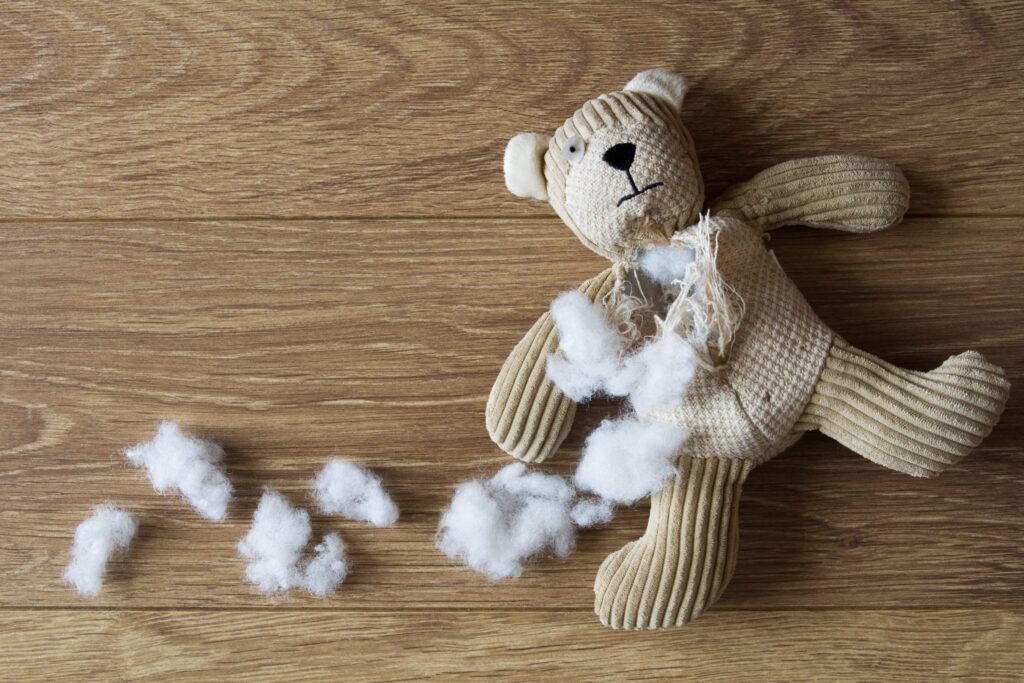No matter what business you’re in, there will be times when things go wrong when serving your customers. From forgetting to process an order to selling a product that doesn’t meet the customer’s expectations, you’re going to let your customers down.
Customer service failures don’t have to define you. It’s how you RESPOND to service failures that can make or break your business.
A few years ago, I had a college roommate and her family coming to visit for a long weekend and didn’t want our dog to be a pest, so I thought I’d get him a really nice toy to keep him occupied while they were here. I went to a local pet shop and purchased a stuffed toy that was labeled by the manufacturer as “Indestructible,” because I knew from experience Jack was quick to demolish toys. Fast forward a few days and our guests had been here no more than 30 minutes when the toy lay on the living room floor, eviscerated and surrounded by its white, fluffy entrails.
The next time I was in the store, I mentioned the incident to the owner, not because I wanted a refund or even an apology, but because I wanted him to be able to let his distributor know the product was far from indestructible. Here’s what happened next:
Store owner: Well, no toy is indestructible, you know.
Me: That may be the case, but when a toy costs $35 and is labeled indestructible, you’d expect it to last more than 30 minutes.
Store owner: Well, did your dog enjoy himself for 30 minutes?
As you can imagine, I never did business there again and not surprisingly, it has since closed its doors.
How you respond to customer complaints, product failures or customer concerns can make or break your business. You can send customers running out the door, never to come back, or you can handle things correctly and turn them into raving fans.
If you’d like to create raving fans when service failures happen, here are five things you should do:
1. Say, “I’m sorry”.
Offering a sincere apology can go a long way toward calming an upset customer. Too many people avoid saying, “I’m sorry,” because they think that means they’re accepting blame for the problem. I’m sorry doesn’t mean you’re to blame, it simply means you feel badly that your customer isn’t happy.
2. Ask how you can make it right for the customer – right now.
Too many times, service providers don’t simply ask, “How can I make this situation right for you?” If the store owner had done that, I would have said, “I’d just like you to let the toy maker know they either need to make a sturdier product, or re-label their toy.” You might have other customers that want a replacement toy or a refund. It’s up to you what you do in response to their request, but simply asking is the only way you’ll know what your customer wants and expects.
-
3. Investigate the problem.
- In the case of the store owner, he should take a good look at the toys, talk to his distributor to see if there have been other complaints, and let the manufacturer know about the problem. It could be that it was just one particular faulty product, a particularly aggressive dog with a powerful chewing drive, or the whole product line could just not be “indestructible” as promised in its labeling.
4. Fix the problem.
If it turns out the toy is defective, the store owner might consider not carrying that product anymore- or wait for the manufacturer to make a better product before stocking the toy again. He could also look for other sturdy toys to offer his customer.
5. Follow up.
No matter the outcome, it’s great to get back with a customer to let him or her know the outcome of the complaint and your investigation. It would have been awesome if the store owner had taken my name and number and called me a few weeks after the incident to let me know that he checked out the toys in response to my complaint and to share his findings. Even if he called to say, “Amy, I think this happened because Jack is just a particularly intense chewer, so I have some other toys that are a lot sturdier that I can recommend,” that would have made the difference between me never going there again and me becoming a life-long loyal customer.
Be sure to read next week’s blog post which will include my Customer Communication Quiz! Find out if you’re a Customer Communication Star or whether you (or your team members) could be better at communicating with your customers!
If you and your team need help with service recovery processes and procedures, contact Amy about programs just for you. With both live and virtual learning opportunities, you can discover:
- What causes service failures
- What NOT to say when a customer is angry or upset
- How to respond with professionalism and grace when a customer complains
- Why it’s critical to your business to have a specific service recovery plan that ALL employees understand and are empowered to employ







